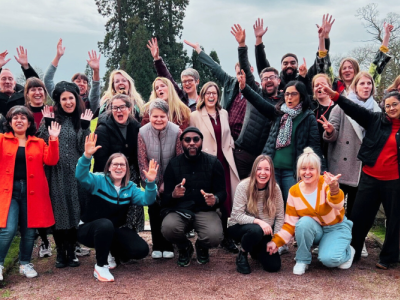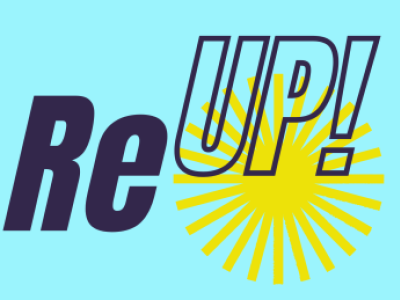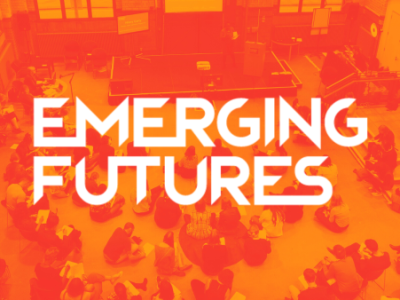Embodying Leadership With ADHD
Hayley Hindle considers her own experience of ADHD and how this works with her own leadership journey.
Picture This, If You Can
You are awake. And you find yourself sat behind a steering wheel – in the driver’s seat. Some kind of domestic vehicle of unknown colour and model. You shift uncomfortably, paradoxically aware of your lack of awareness, and reach to adjust the wing mirrors in hopes of better visibility.
Outside the window is daylight. Perhaps late morning – the sun is nearing its zenith and clouds scuttle gently towards the distant. This much is obvious to you. But what next? Perhaps you should start the engine and move off; locate a road to follow.
There’s a dreamlike quality to this state. a sense that you must have gotten here somehow – to this sunlit sometime – morning. But no clear recollection of a backstory to the narrative. It’s all a bit vague and illogical. A series of inevitable movings on and gravitational downhill pull. Some clearly delineated roadblocks and meandering diversions. These feel like driving in the days pre sat-nav and Google Maps where, absent a person alongside interpreting an oversized fold-out two-dimensional representation of the landscape in front of you and shouting a direction, you would have no choice than keep distance and pace in lane, gripping the wheel a little tighter at 10 and 2 o’clock.
Eyes narrowed in earnest to spot a clear road sign with your destination on it, you realise too late that you have missed the exit ramp that might have got you there directly. And always in the back of your mind the niggling fear that the fuel tank may drain out before you arrive – wherever ‘there’ might be.
A Leadership Journey
(Kruse, 2013) defines Leadership as a process of social influence, which maximises the efforts of others, towards the achievement of a goal.
Until quite recently I didn’t know that ADHD and autism were primary influences on the way that I interacted with the world. At the beginning of my cultural Leadership journey, it felt like perhaps the only social influence I had was in persuading others to keep a good distance away!
ADHD might be a bit like driving an unpredictably unreliable vehicle, one that runs brilliantly one day and not the next. My ‘driving’ (which I now understand through this lens of autism and ADHD) was barely coherent and, as a result, my influence did not contribute usefully to the effort of others. Rather like the journey above, I appeared directionless and wasn’t signalling my intentions to those around me. The things that apparently worked for other people didn’t work for me, but at the time I couldn’t fathom why.
If I was going to gain any career (or life) traction at all, it wasn’t going to be by aping the trajectory of others. I didn’t know the usual routes ‘in’ anyway. Learning about the ADHD and autism part six years ago was the vital clue that released me to consider other possibilities. No more trying to ‘hide the different’ because I now knew it wasn’t a moral failing that held me back. But even so I needed a different kind of journeying strategy that allowed for and honoured that ‘different’.
Working It Out…
In other words, as Kushmann Koya asked in a 2016 research paper, ‘How could we understand the dynamics of leadership from a holistic perspective that recognizes the emergence of leadership in the interplay between the biological, individual and social domains?’
The best fit I have found to this puzzle is the notion of ‘Embodied Leadership’, a model that I bring now to my own leadership journey and coaching practice. In other words – my conviction is that this ‘leading’ business is about more than just being ‘authentically yourself’. Instead, an embodied leadership journey describes the interaction of ‘You’ within your own domain of influence, and it also considers the impact and influence of others around you. This distinction allows for the limitations we perceive in our own ‘engine management system’, to be one of many components in our unique journeying and not simply an obstacle to it. Embodied Leadership describes a dynamic field that is subject to a range of influences beyond the authenticity of ‘self’ in isolation.
Embodiment, as distinct from authenticity, requires the development of attributes that correlate with a ‘state of being in the world’, situated in time and place:
- Self-Awareness: Seeking feedback to improve interactions with others and accurately describing how others view our capabilities.
- Balanced Processing: Soliciting views that challenge our deeply held positions and listening carefully to different points of view before coming to conclusions.
- Relational Transparency: Saying exactly what we mean and being willing to admit mistakes when they are made.
- Internalised Moral Perspective: Demonstrating beliefs that are consistent with actions and making decisions based on our core beliefs.
Driving the Metaphor Home
How in control do you feel of your capacity and agency for moving forward with ease? And what about slowing to retrace your path when needed? For many with ADHD it’s a practical life lesson we never seem to learn. Hear me out here: if we imagine that being autistic is like embodying a Tractor, or a Formula One car, in amongst a majority of Ford Fiestas (specialist vs generalist capabilities), then ADHD feels like driving a particularly unreliable version of that vehicle – one which performs magnificently one day but can rarely be trusted to do so the next. And with both autism and ADHD together? Well you have yourself an unreliable race car (or tractor!) that frequently breaks down without constant vigilance. It’s a labour of love to stay roadworthy.
ADHD stands for Attention Deficit Hyperactivity Disorder, which is a misnomer. It’s more that you don’t have ready access to the knowledge that is in your brain somewhere. As pre-eminent research Doctor Russell Barkely puts it, ADHD is not a disorder of Knowing What To Do, it’s a problem with Doing What You Know –
of reliably putting the theoretical into practical use. Like our car, sometimes it all comes together smoothly, but more often than not the functioning is unreliable.
You don’t need much skill to jam a foot on the accelerator pedal of life. Just a leg long enough for your toe to reach. The skill – or executive function – comes in all the other elements of getting from A to B in one piece intact; in the self awareness, the balanced processing, the relational transparency, and the internalised moral perspective. The skill is in deciding a destination and planning a route; filling the tank with the right kind of petrol, checking traffic conditions and rush hour limitations. Staying focussed on the primary aim and not getting side tracked. And all of that assumes the fundamentals of coordination of hand and eye and foot and reflexes to stay the course and avoid crashing into others you encounter along the way.
Embodying Leadership = Honouring an ADHD Brain
Self Awareness comes when we know what’s under our own bonnet. When we understand that the wires of connection between the various functioning brain areas in ADHD are not pruned well, and there’s information overload. Too much input which overwhelms our capacity to process it all at once. Embodying leadership under these circumstances might look like giving ourselves extra processing time, and making sure we are clear about which pieces of information are most important in a given situation.
Balanced Processing comes when we recognise our ADHD tendency to experience too much emotion; that floods our metaphorical engine before we can temper it with the rational. Embodying leadership here might look like practising allowing ourselves grace, and time for the emotional wave to move through us before we weigh the information at hand and respond.
Relational Transparency comes when we acknowledge the dodgy ADHD ‘brain fuel’ injector line that won’t calibrate well to the sustained forward motivation needed to keep up. Embodying leadership might look like learning to pace ourselves: to under promise what we can achieve, and to seek appropriate support from others in advance where we can.
Internalised Moral Perspective grows when we reckon with our poor ADHD internal sense of time. As we reflect on when it is appropriate to enter into a flow state – existing only in this glorious moment of Dopamine soaked special interest – and when it is appropriate to prioritise other activities that align with our values. Embodying leadership here might mean compassionately curating external measures that help to shape and support our behaviour accordingly. In my own case, without body doubling, Google Calendar and Alexa’s voice reminder function, I (like many ADHD-ers) would be running on the emergency fuel of adrenaline. Reeling from a heightened state of anxiety about the nebulous and untrustworthy nature of time passing, I’d either be frozen in fear or racing to get ahead of the future curve by never stopping to course correct. It’s no way to be; I can report from experience.
Conducting Your Own MOT
An ADHD brain is ill-equipped (are any of us well-equipped?) to function in a late capitalist economy where the expectation is homogenous standardised output at ever greater pace. The tolerance levels of all those functional systems are so tight in some of us that there’s little room for error. Just this week I forgot to take a dose of prescribed hormone treatment and it took me until that evening to work out: that missed med was the reason I’d been doubled over sobbing (no exaggeration) most of the working day. And It’s rarely the person in the vehicle that notices their own headlight out and the flat tyre, is it? It’s the others looking from outside who can see the crash coming.
Leading in an embodied way means that we might seek trustworthy eyes to ‘check the tyres and headlights’ with continuous positive regard for us (a pit crew, if you like!). Over time we can develop the intelligence that comes not only from the thinking part of our brain, but also from a wider embodied intelligence (that of self and of our own communities of support) all feeding into a coherent ‘soma’. To clarify, coherence of body and brain is best practice for all of us, but for those with reliably unreliable mechanics it’s even more important to cultivate. We need all the calibration we can get.
Aren’t We All Quite Tired?
Impairment starts where ability stops. We can of course all empathise with a degree of brain fog, fatigue, and impulsivity. The difference with ADHD though is that the symptoms are pervasive not temporary, and that they impact daily life to a significant and detrimental degree.
It’s just not true that ‘we’re all a little bit ADHD’. As with Autism: On an imaginary bell curve of human attribute distribution, with a minority of Tractors at one end, rising to a majority of generalist Ford Fiestas in the middle – at a certain transitional point the hybrid tractor / fiesta is no longer ‘tractor’ enough to perform that specialist job and be recognisably a tractor. Just so – There’s an agreed safety threshold for passing a vehicle MOT, and ADHD-ers aren’t getting a pass certificate on days with a ‘Y’ in them. Life expectancy for ADHD-ers is shortened by 15 years on average. If the impulsivity and recklessness doesn’t fell us, then the suicidality often will. It’s not a ride most would actively choose.
The medical screening for this developmental neurological condition that affects approximately 1 in 20 people is not an easy one to reach a threshold on, and it requires cross referencing input from others that know you, and symptoms evidenced in multiple areas of life – home, work, relationships etc. Self-reporting isn’t enough. These are the kind of brain differences that would light up bright on an MRI.
The current social media noise around ADHD might give a false impression of over-diagnosis. More likely, as with awareness around autism, understanding has increased and more people are recognising that their symptoms are better described by ADHD than by delinquency, laziness, depression, bipolar, trauma or substance abuse (to name a few common assumptions).
For most of my career in the creative sector when I had no knowledge of the nature of my difference, internalised shame was the almost inevitable consequence of the repeated pattern of crash and burn. Cycles of misunderstanding and work environments that started off welcoming and rapidly became intolerant. We have a notion that as adults, we should be in control of ourselves. The idea that ‘professionals’ might not always have control of their own ‘brain app’ is not a notion that many organisations tolerate in reality even in these enlightened times. Humans like predictable and explainable performance and behaviour, and most of us still nurture a niggling belief that if – only – we – gave – it – more – effort …. we could will our body-mind to conform. (Fat chance!)
Where Does That Leave Us?
Embodiment principles mean that a congruence of Intelligences can come together in flow within us to inform our actions. (Notice here I dont say ‘behaviours’, since some of those may never be fully within the parameters of ‘agency’ as people with neuro-difference from the majority. I nod too to those with other physical or cognitive differences that take some of that steering capacity away.)
Intelligence from our gut instinct; the gut which registers flickers of important clues about intent or probability or zeitgeist at a less than conscious level before our thinking brain can come online. Intelligence from our emotions – even at the rogue levels an ADHD brain delivers them at. Intelligence from our glorious senses – of touch, sound, smell, taste, pressure and heat and interoceptive capacity. It’s a truism but often it is a brilliantly heightened capacity for these other-than-cognitive intelligences that brought many of us into the Cultural and Creative sphere in the first place. I don’t believe that relegating them makes for good leaders in any domain.
Leadership is a journey which begins to make sense as we deepen our knowledge of who we uniquely are. Intentionality is a great place to start. Once we have a degree of automation on our own ‘handling’, we can free up a little more space to look up and out at our surroundings. To build in tolerance to act and lead in ways that honour the unpredictable; our own and that of our context. And to advocate for this kind of leadership with others. To balance intelligences in the principle of tensegrity, each element supporting the whole within our ‘self’ system, and within the larger systems of our own communities of practice, and interest, and family, and beyond.
Driving Without Distraction
Picture this if you can. You are awake. And you are sat behind a steering wheel, exactly as you intended. Though you can’t directly see from your position inside, you know yourself to be driving an iridescent black VW Eos. The shiny paintwork glinting in the daylight. It’s a coupe with an electrically operated sunroof. The electronics don’t always work, mind – sometimes, however much you hold down the operate button above you, the sliding roof panel still refuses to shift (a particular pain if it’s stuck open when it starts to rain). But really it’s a great car that drives like a dream. You shift your bum back into the comfy worn leather bucket seat which is already adjusted for your feet to reach the pedals.
Outside the window the midday sun plays drifting shadows through the clouds onto the arable fields at the sides of the wide open road ahead of you. You glance down to the phone on the passenger seat next to you and scan the sat nav route for holdups, setting the speaker volume to loud so there’s no need to look over while driving, and start the engine.
Themes Alumni Journeys Inclusive Leadership Practice Practices of Self Care










































